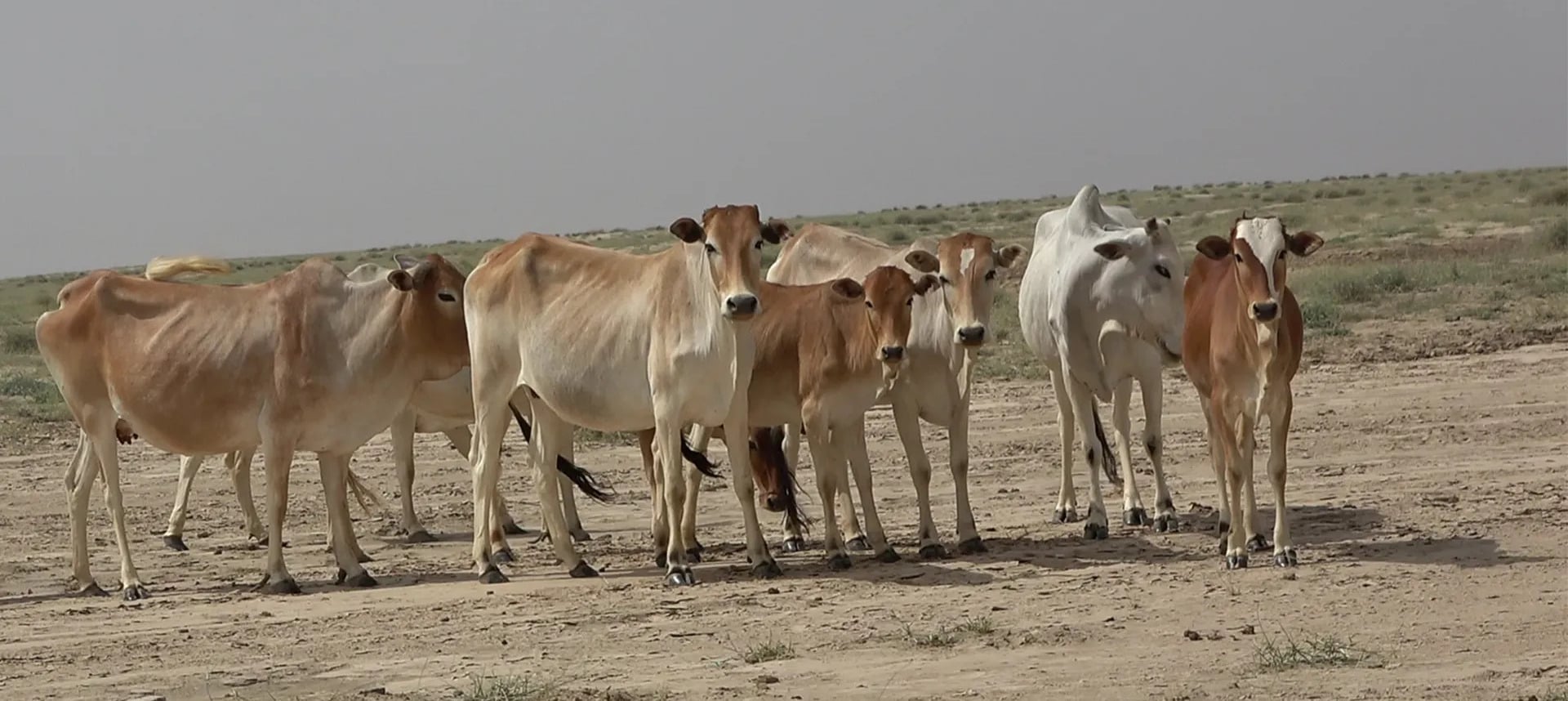
Al Jazeera
Last updated on: 31-01-2024 at 8 PM Aden Time
Bassam Al-Qadhi (South24, HJF)
"We lost everything. I feel that our lives have truly come to an end," says Alia Hamed, recounting her family's struggle with the effects of the floods that inundated her village near Wadi Dhami in Hays district of Hodeidah Governorate in late September 2023.
"We no longer have a home, and even the sheep farm from which we make a living has been destroyed. The floods demolished our house, eroded the land, and took our sheep, our only source of livelihood," she adds.
With a deep sigh and tears rolling down her cheeks, she drifts away, murmuring: "Allah suffices me, for He is the best disposer of affairs. The floods robbed us of our abodes, leaving us displaced and homeless in the blink of an eye."
Heavy rainfall hit the western coastal areas of Yemen in late September last year. United Nations organizations reported that this precipitation led to the destruction of numerous homes, farms, and properties in the districts of Hays, Al-Luhayyah, and Al-Zahra in Hodeidah Governorate along the Red Sea, causing substantial human and material losses.
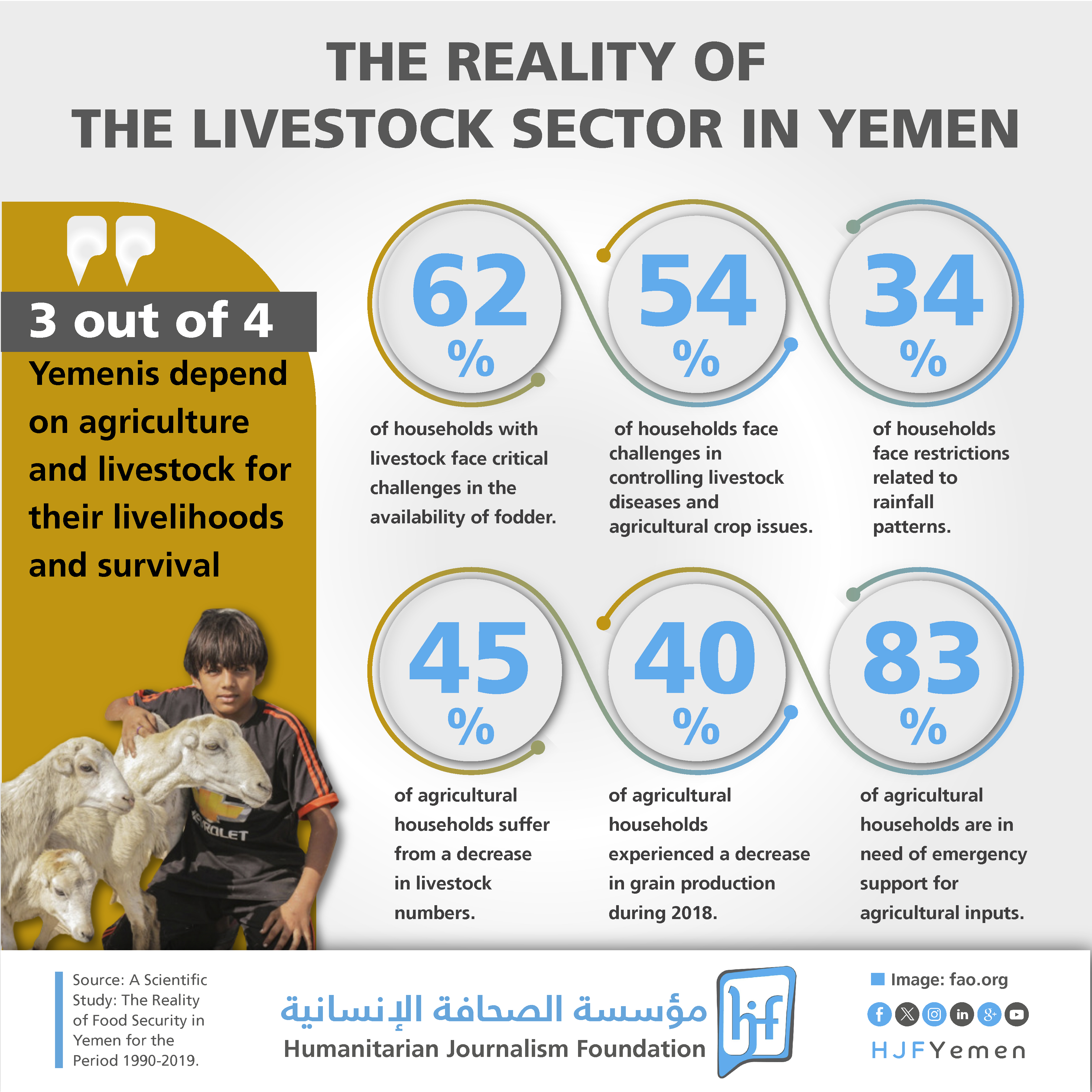
As per the International Committee of the Red Cross in Yemen, the climate crisis is pushing communities, already burdened by the prolonged conflict, to the verge of collapse, in a country where three out of every four Yemenis depend on agriculture and livestock for their survival.
In 2022, farmers across Yemen, both in North and South, experienced the devastation caused to their livelihoods due to severe drought, destructive floods, in addition to the ongoing prolonged conflict. This has posed significant challenges for them in meeting their living expenses.
Economic Contributor
Livestock farming is a major component of Yemen's agriculture sector, contributing significantly to the overall income. This is particularly noteworthy as around 75% of Yemen's population resides in rural areas, with nearly 80% of them owning livestock or being involved in animal husbandry, especially cattle, such as cows, as well as sheep, goats, camels, and poultry. These insights are shared by Dr. Abdulrahman Al-Khatib, the Director of Animal Health at the Ministry of Agriculture, Irrigation, and Fisheries in the Internationally Recognized Government of Yemen.
According to Al-Khatib, the total livestock numbers surpass 9,717,779 sheep, 9,485,903 goats, 1,818,052 cattle, and 447,652 camels. Moreover, the current annual value of animal products (including meat, milk, eggs, leather, honey, and fertilizer) stands at 622 billion Riyals, equivalent to approximately half a billion US dollars.
This value would double if farmers have access to nutritious feed for their livestock, care, training, animal guidance programs, and quality veterinary services, coupled with advice in the realms of animal breeding and production.
While livestock is recognized as an essential component of Yemen's agricultural sector, Al-Khatib contends that it falls short of satisfying the domestic need for animal products.
Consequently, the country relies on importing substantial amounts of live animals, meat, and dairy products. While Yemen produces only 42.6% of the milk needed domestically, and the local output of poultry meat covers just 56.4% of the demand. Furthermore, the amount of beef, sheepand goat meat produced cater to only 63.7% of the local demand, while it has attained full self-sufficiency in egg and honey production. Additionally, the livestock sector plays a role in contributing 8.9% to the overall agricultural exports.
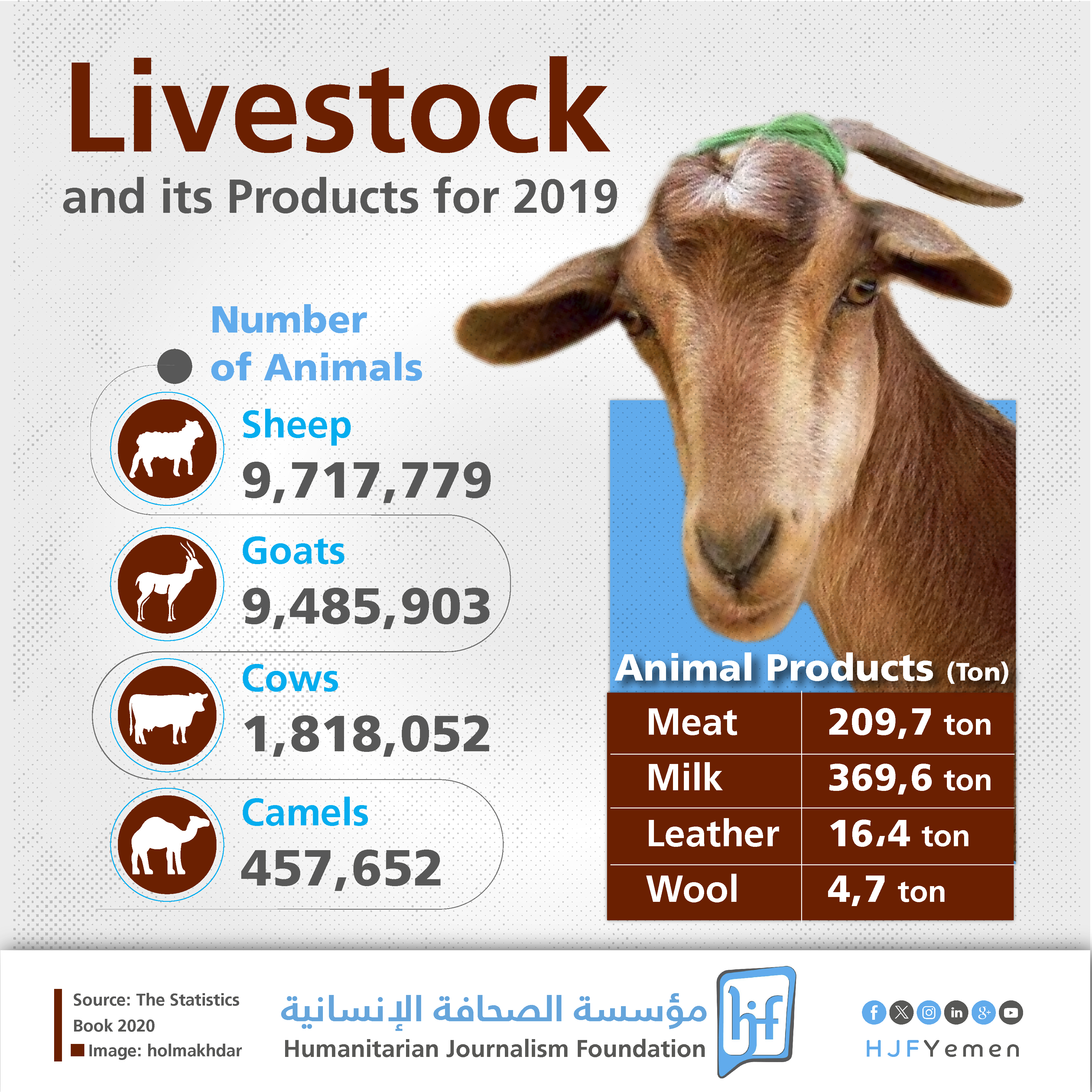
Climate Phenomenon Severity
Meanwhile, a recent study has confirmed that the exacerbation of the climate change phenomenon in Yemen directly impacts the productivity efficiency of animals, their fodder resources, and their health. This further increases the suffering of the people, and also reduces the availability of food and employment opportunities for a significant number of Yemeni residents. This, in turn, has a negative impact on food security and the overall economy of the country.
A study conducted by Dr. Abdul Karim Emad, Professor of Animal Production and Nutrition at the University of Dhamar in Yemen, and Dr. Jürgen Tantow from the Faculty of Veterinary Medicine at the Free University of Berlin, Germany, aims to assess the anticipated impact of climate change on animal production in Yemen.
The study, published in the Arab Journal of Science and Research, Volume 6 - Journal of Agricultural, Environmental, and Veterinary Sciences in late June/October 2022, highlighted that the consequences of climate change encompass a decline in both the quantity and quality of animal products. Climate change would also adversely impact reproduction, impair animal fertility, and decrease their population. Moreover, it is anticipated to result in a rise in the diversity of diseases and pests affecting animals.
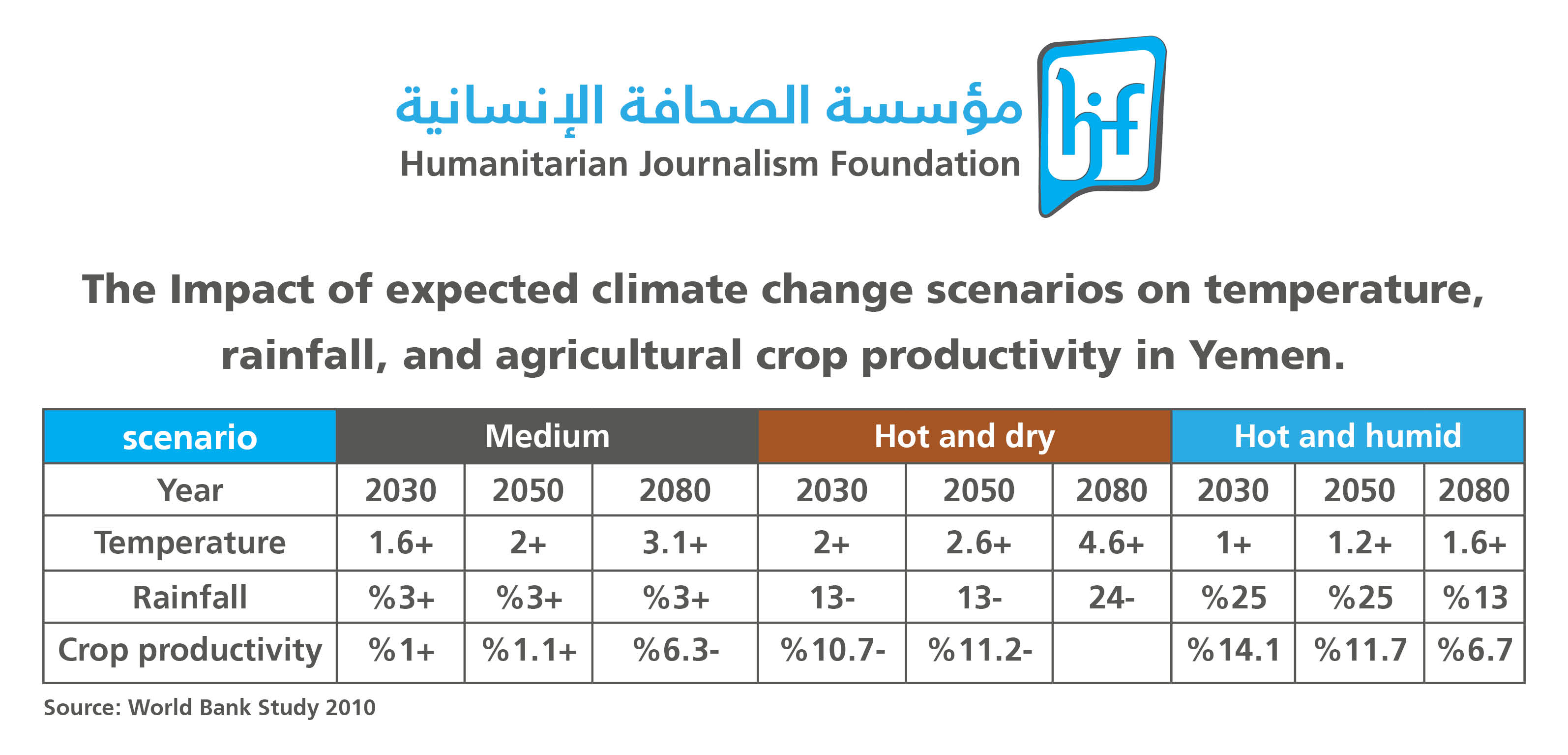
The Food and Agriculture Organization of the UN in Yemen emphasizes that the impact of climate change on agricultural and livestock production is both direct and indirect, stemming from changes in rainfall patterns, drought, floods, and the shifting distribution of pests and diseases. Therefore, addressing climate change is crucial not just for sustainable development but also for the elimination of hunger.
A Reference Study
The main researcher describes the study as comprehensive, as it is centered on examining the outcomes and data from preceding scientific research and studies that directly addressed critical climate change elements like high temperatures, scarce rainfall, and drought across diverse global regions. These elements have an impact on animalproduction, including the consequences of increased temperatures on animal development and reproduction. Furthermore, the research delved into understanding the connections between climate change, heat, drought, pasture growth, and the availability of fodder. The researcher also investigated how climate change influences the transmission and spread of diseases. In light of these findings, the study reached conclusions regarding the potential or expected impact of climate change on animal productivity in Yemen.
He clarified that the study has arrived at numerous conclusions, predominantly unfavorable. The intensification of climate change elements, like the increase of high temperatures and prolonged drought periods, causes a reduction in the food available for animals in terms of pastures and fodder. Consequently, animals endure heightened suffering due to extreme heat and hunger, resulting in increased mortality rates and a decline in their overall population. This, in a cascading effect, leads to a reduction in overall production and prompts farmers to abstain from animal husbandry due to the challenges of managing the associated breeding and production costs.
Climate and War
Muhammad Musa Al-Omari, the owner of a cattle and sheep farm in the Ja'wala region west of the city of Aden, South Yemen says: "The animal husbandry sector in the country has witnessed a frightening decline in recent years, and the situation has become even more dire since the Houthi group's overthrow of the state in late 2014. The severity of climate change and the prolonged duration of the conflict have further exacerbated the situation."
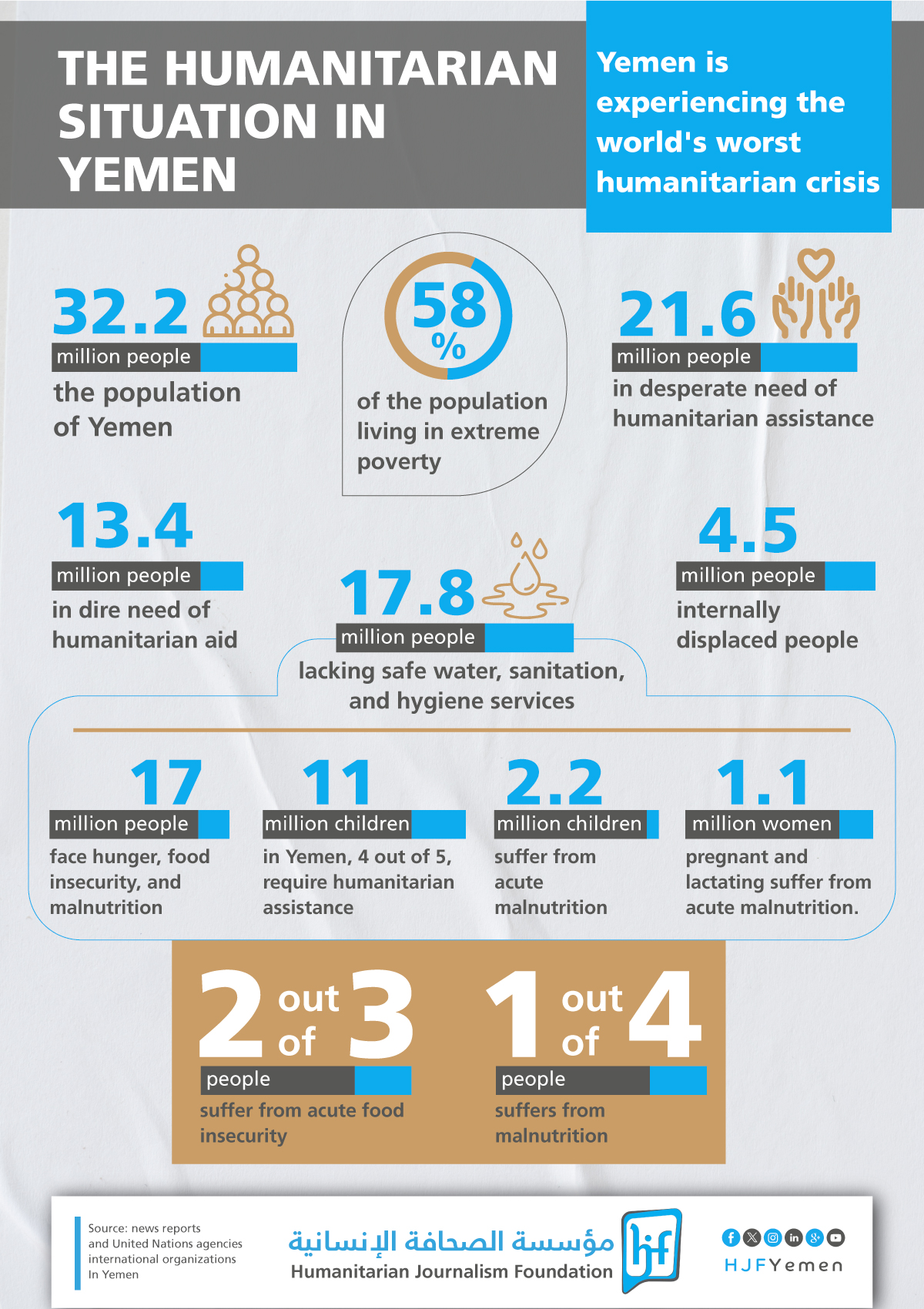
Al-Omari clarified that the primary consequences of climate change, including temperature rise, humidity, drought, changes in rainfall patterns, floods, torrents, and the spread of diseases, will negatively impact and contribute to a decrease in animal production. This, in turn, will lead to the weakening and depletion of feed and grass, vital sources of nutrition for the animals. He foresaw a substantial decline in animal production in the coming years.
He adds: “The high temperatures result in reduced production and scarcity in obtaining proper animal nutrition There is also a deficiency of nourishing water for trees, plants, and grass. Animal production might suffer due to delayed rainfall in its regular seasons. Furthermore, floods and torrents have the potential to wash away and destroy these resources, ultimately causing their demise and collapse.
In addressing the anticipated role of government agencies in alleviating the effects of climate change on animal production, Al-Omari underscores the significance of preserving plants and tree species to avert their diminishing numbers and even extinction. He stresses the importance of exploring and implementing alternative energy sources to facilitate water-efficient animal feed production. Furthermore, establishing irrigation networks for farmers and constructing essential water reservoirs and barriers is deemed essential.
Current Challenges
Al-Omari emphasized that the primary challenges facing the animal production sector include the lack of availability of nutritious animal feed, its insufficient supply, and low productivity. Other challenges include the increasing prices and rent of agricultural equipment and irrigation networks, rising fuel costs, and the growing expenses associated with establishing wells for farm irrigation.
He added: "Adapting to the impact of climate risks can be achieved through government support for farmers. Prioritizing climate change as a key issue and developing a national plan to address the destructive climate risks, mitigate their impacts, and alleviate their consequences on animal and agricultural production are essential.”
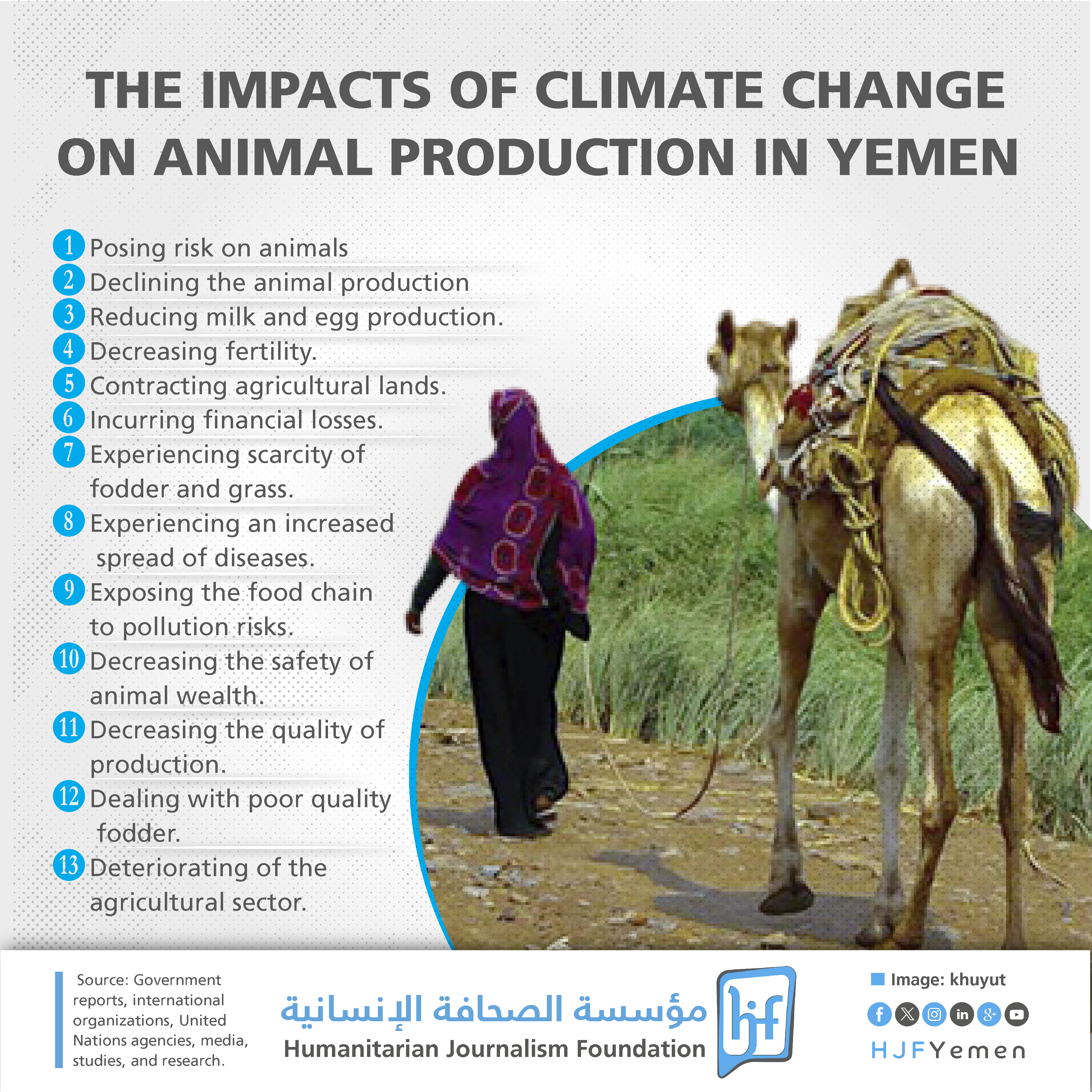
Al-Omari points out that the decline in animal and agricultural production, amid climate deterioration, has a significant impact on food and human security. This could lead to the complete collapse of livestock due to the scarcity of resources encouraging sustainability, lack of state support for farmers, and the absence of investment in both agricultural and animal sectors.
Dr. Abdulrahman Al-Khatib, the official responsible for the Ministry of Agriculture and Irrigation, underscores the difficulties confronting Yemen's livestock sector. These difficulties encompass critical shortages in nutrition, stemming from scarcity of traditional feed and diminishing pasture lands due to the extensive impact of military conflicts and increased desertification as a result of minimal rainfall. Furthermore, there is a notable loss of traditional feed, a lack of utilization of concentrated feed, and the rapid spread of highly infectious epidemic animal diseases. The economic repercussions of these diseases are substantial for the country, encompassing ailments such as small ruminant plague, sheep pox, foot-and-mouth disease, rift valley fever, snail fever fly, and Newcastle disease in poultry.
He added: “Reduced production in local breeds (red meat, dairy and its derivatives, and table eggs) is a result of the absence of animal genetic improvement and the lack of preservation of animal genetic material. This is exacerbated by the slaughtering of females, calves, and young goats, the lack of rehabilitation, training, and veterinary guidance roles, and a decline in the level of veterinary health services provided to farmers and breeders”.
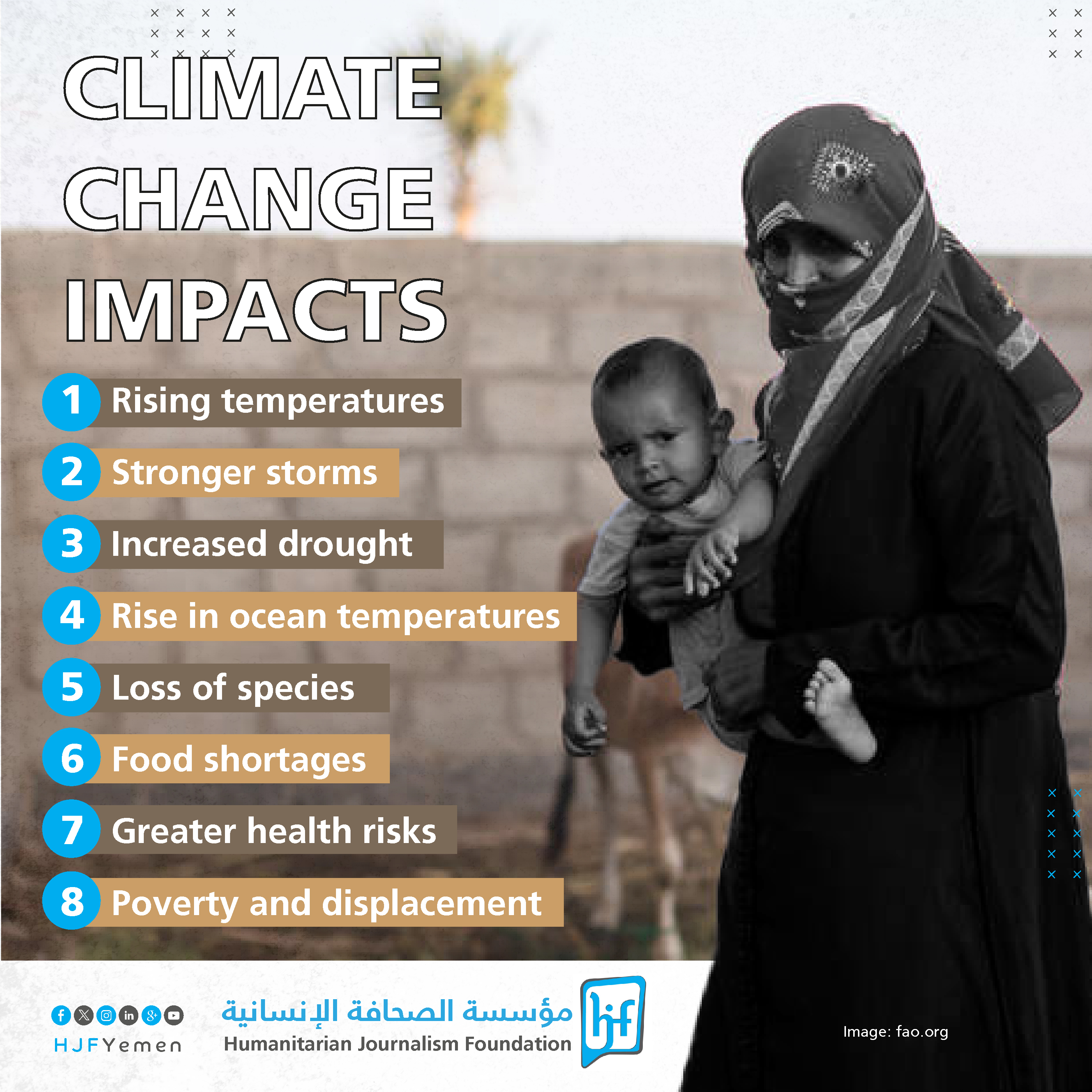
A Negative Impact
Dr. Emad's study at Dhamar University reveals that the forthcoming effects of climate change on animal production, agriculture, and food security in Yemen encompass a decline in both the quantity and quality of animal products. This will adversely affect the reproduction processes and weaken the overall procreation of animals.
Among the notable climate change impacts discussed in the study are:
- Difficulty in cultivating cereal crops and fodder due to high temperatures, low and fluctuating rainfall, and soil degradation.
- Growing of various plants unsuitable for grazing and changes in the plant components of natural pastures, such as a shift from grasses to legumes.
- Changes in the type and quality of herbs and grasses.
- Scarcity of water resources, along with the potential change in rainfall patterns and agriculture seasons.
The study also illustrates that climate change has a significant negative impact on the availability of drinking water sources for livestock and on the systems of cattle fodder production and pasture crops. The prolonged absence of rainfall leads to the spread of drought, desertification, and soil degradation. Additionally, the decline and scarcity of food sources, including pastures, fodder, and water shortages, directly and adversely affect the productivity of animals.
Climate exacerbates the economic situation
He urged the necessity of enhancing and endorsing research centers linked to climate change, animal resources, forage crops, natural pastures, and the environment in universities and other research institutions. Moreover, he highlighted the importance of sponsoring research and studies concerning climate change and its impacts on plant and animal production, as well as on food security and the national economy.
Abdul-Karim highlights the influence of climate change on water resources, agriculture, the environment, and food security. This impact includes a reduction in agricultural land, decreased productivity of plant crops and pastures, scarcity in fodder resources, and a potential rise in temperature that could lead to the death and diminished population of animals. Consequently, this will result in decreased overall productivity and a shortage of agricultural products.
Measures to Address Climate Change Impacts
Emad mentioned that addressing the impacts of climate risks on water and food security in Yemen necessitates a fundamental change in agricultural practices and the management of animal resources within agricultural systems.
One of the measures that can alleviate or confront climate change is the development of an early warning system. This system works to gather essential information and data about climate change disasters, including high temperatures, floods, hurricanes, and drought episodes. The aim is to prepare for avoiding or mitigating the impacts of these disasters. The second measure involves employing heat-resistant local crop varieties like sorghum and millet, presenting a crucial strategy to alleviate the effects of climate change. Furthermore, adopting early-maturing plant varieties or crops is another mitigation strategy, taking into account the short and early conclusion of the rainy season.
In addition to using more suitable varieties or types of crops, another measure suggested is leveraging the genetic potential of local strains and preserving them, and developing appropriate breeding programs through precise scientific initiatives related to genetic improvement. This includes diversification and intensification (increasing quantity and production) integrated into pasture and livestock management and crop production.
In presenting measures to confront the impacts of climate risks, he addresses the dissemination of new concepts in the pasture environment and their importance in animal nutrition. He emphasizes the mechanism for preserving and enhancing pastures, noting that reducing heat stress in animals requires a focus on improving nutrition (providing good feed), shelter (protecting animals from intense heat and sunlight), and animal healthcare.
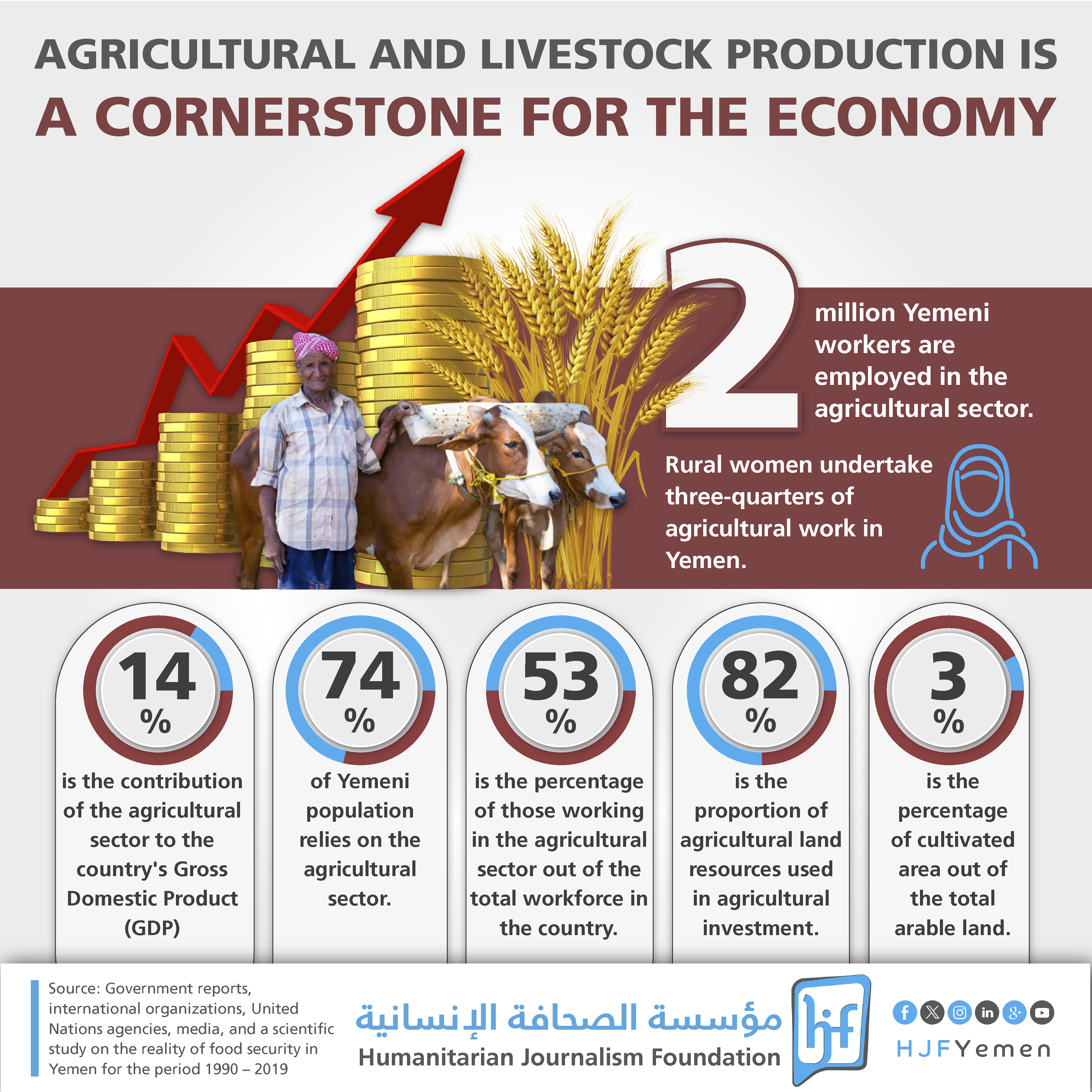
The professor of animal production and nutrition at Dhamar University emphasized the need to develop strategies to improve water use efficiency, preserve diverse production systems, and conserve nature and ecological systems.
A pivotal Role for the Government
"The role of the government lies in formulating public policies and enacting laws related to mitigating the impacts and risks of climate change, such as the Animal Wealth Protection Law, laws for the protection of nature, natural pastures, environmental protection, and biodiversity. This is because the majority of the population primarily relies on the exploitation and utilization of these natural resources," he adds.
He emphasized: "The government bears a significant responsibility for disseminating information and news in rural and urban areas related to climate change, its risks, and its impacts on agriculture and animal wealth, particularly on food security and the economy in general.”
"The government should develop and deploy early warning systems and epidemiological monitoring centers in all governorates, construct dams and water barriers, encourage investments in water-saving technologies, and provide incentives that promote the use of more water-efficient crops. Additionally, investments should be made to enhance agricultural alternatives, such as coffee cultivation, He continued.
Dr. Abdulrahman Al-Khatib, the Director of Animal Health, explained that there are ongoing projects and those being implemented, such as the rehabilitation of epidemiological monitoring centers, veterinary centers, and clinics in the governorates. There are efforts to improve diagnostic techniques for animal diseases at the Central Veterinary Laboratory, rehabilitation and training of veterinary staff, and the establishment and rehabilitation of veterinary laboratories and quarantine facilities in Aden, Mukalla, and Al-Mahra. Additionally, there are initiatives for the revamping of the Veterinary Institute in Hadramout and for establishment of the Veterinary Medicine Department at Nasser College of Agricultural Sciences.
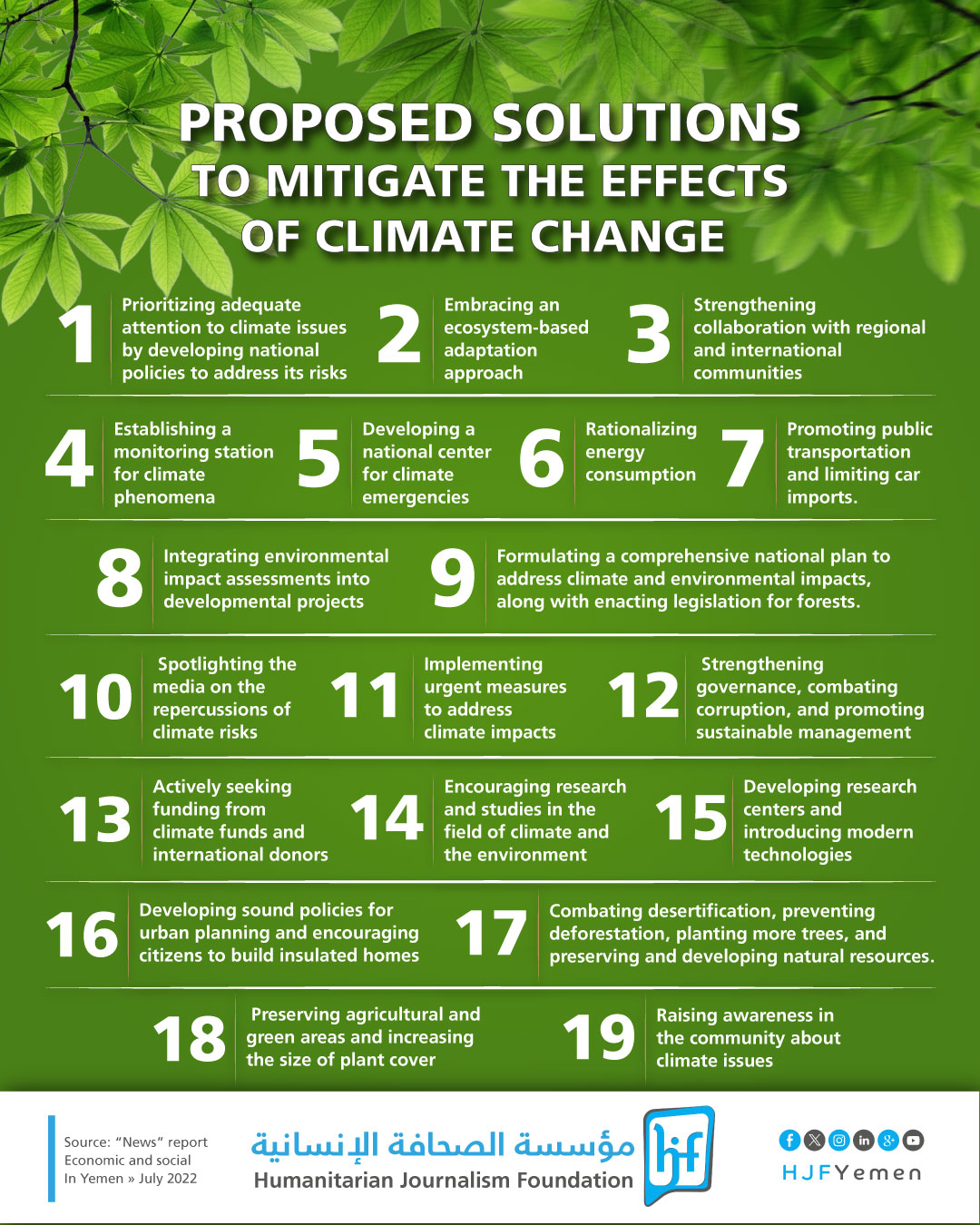
An International Issue
"Climate change in turn, reduces the income of farmers and livestock breeders, resulting in increasing the poverty rate and a spike in the prices of agricultural products," the official emphasized. He affirmed that "climate change will exacerbate the suffering of people in Yemen, especially since those working in the agricultural sector constitute more than half of the active workforce. This will have a negative impact on the overall economy and on food security in the country."
Climate change is one of the biggest challenges facing the Earth today, with its negative impacts expected to occur worldwide and across various aspects of life to varying degrees.
According to scientific predictions, the Earth's surface temperature could rise between 1.8 and 4 degrees Celsius by the year 2100. When the temperature rises by 1.5 to 2.5 degrees Celsius, it is expected that approximately 20 to 30% of plant and animal species will be wiped out. This will have a negative impact on food security, including a direct effect on the productivity, growth, reproduction, and health of agricultural animals.
Recommendations for the Yemeni Government
Another scientific study recommends that the relevant government authorities in Yemen should undertake measures to adapt to the impacts of climate change. The study emphasizes that Yemen faces various environmental challenges, with climate change being a significant concern due to the region's arid climate and scarcity of water resources. It suggests that concerted efforts are needed to address these challenges and implement adaptation measures to mitigate the severe effects of climate change on the country.
The study published in the ’Roaa‘ Journal of Arts and Humanities in September 2020 by the University of Biskra in Algeria anticipated an increase in drought conditions and evaporation rates, primarily due to the elevated terrain in the region. This makes the area more susceptible to the impacts of climate change. Consequently, there is an expected rise in the frequency of drought waves, leading to a decline in agricultural and animal production, as well as food and water security.
In addition, Dr. Ahmed Rahim, a professor of Animal Physiology at Fayoum University in Egypt, presents a set of proposals to overcome the impacts of climate change on animal production.
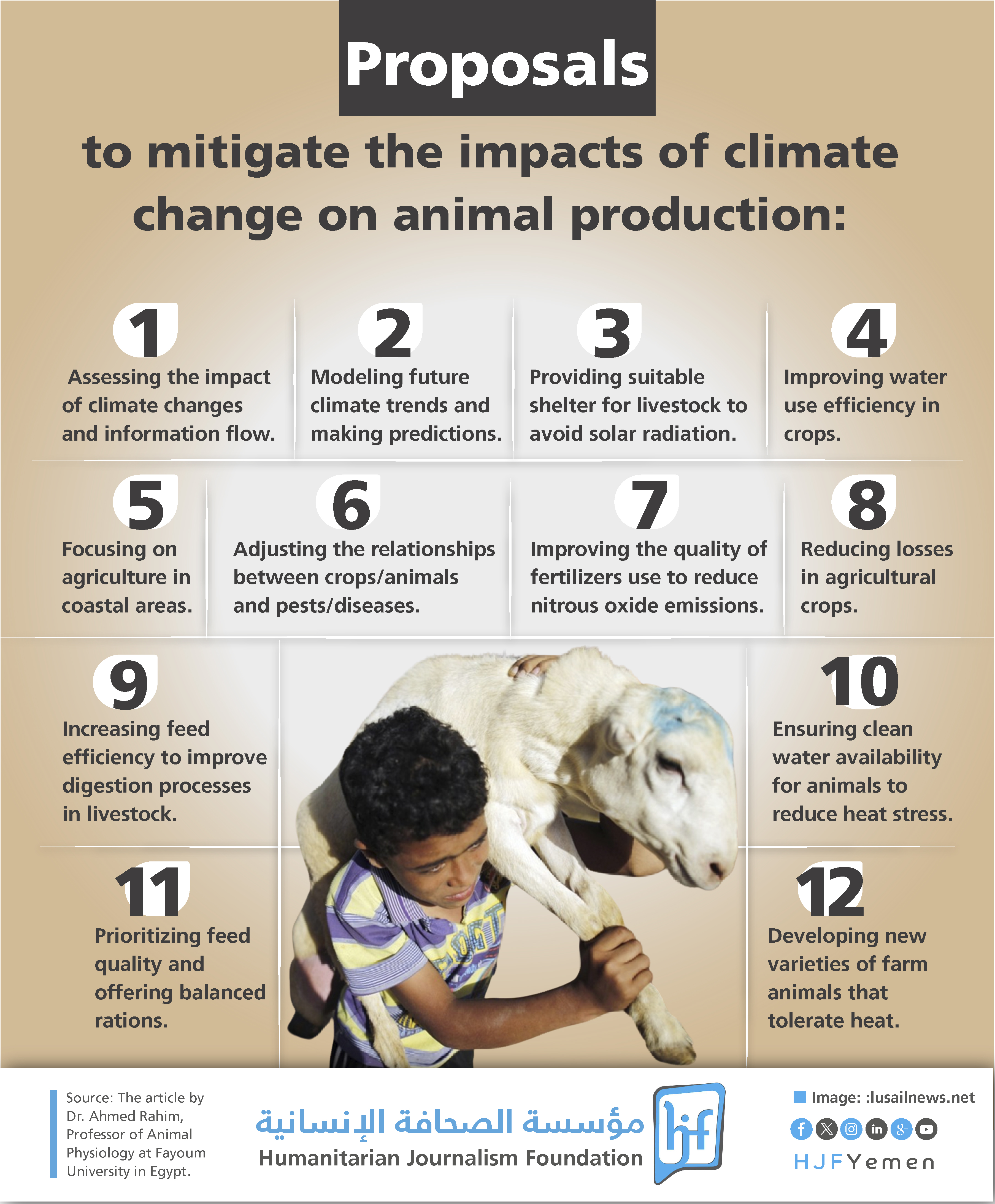
The decline of livestock
A 2018 report from the Agricultural Statistics and Meteorology Administration in Yemen highlights a reduction in the country’s animal wealth between 2014 and 2018. The livestock population, which stood at approximately 21.296 million heads in 2014, declined to about 19.392 million heads during the mentioned period. This included 8.813 million sheep, 8.644 million goats, 1.503 million cattle, and 431,000 camels.
The animal production in Yemen declined between 2014 and 2018, with meat production decreasing from 215,126 tons to 180,918 tons. Additionally, milk production dropped from 379,564 tons to 316,782 tons, according to the 2018 statistics.
Osan Al-Sha'ari, the Director of Animal Production at the Ministry of Agriculture, Irrigation, and Fisheries of the Internationally Recognized Legitimate Government, affirmed that climate change has indirectly affected livestock. This impact is manifested through the desertification of agricultural lands, leading to a reduction in the quantity of agricultural crops that livestock feed on. Additionally, heavy rainfall has resulted in the erosion of agricultural lands, further influencing animal production.
He adds: "The rise in temperature directly affects livestock, particularly in temperate regions. Elevated temperatures are known to induce stress in agricultural animals, resulting in reduced reproductive efficiency in both males and females. Additionally, there is a heightened prevalence of diseases and insects that impact agricultural animals."
Absence of Animal Health
"The decline in livestock numbers in the last ten years is attributed to the impact of wars, resulting in diminished healthcare for animals. The mass displacement of families has further contributed to the degradation and reduction of livestock, leading to a decrease in overall production. Additionally, families have had to sell their livestock to fulfill their needs amidst the ongoing conflict," explained Al-Sha'ari.
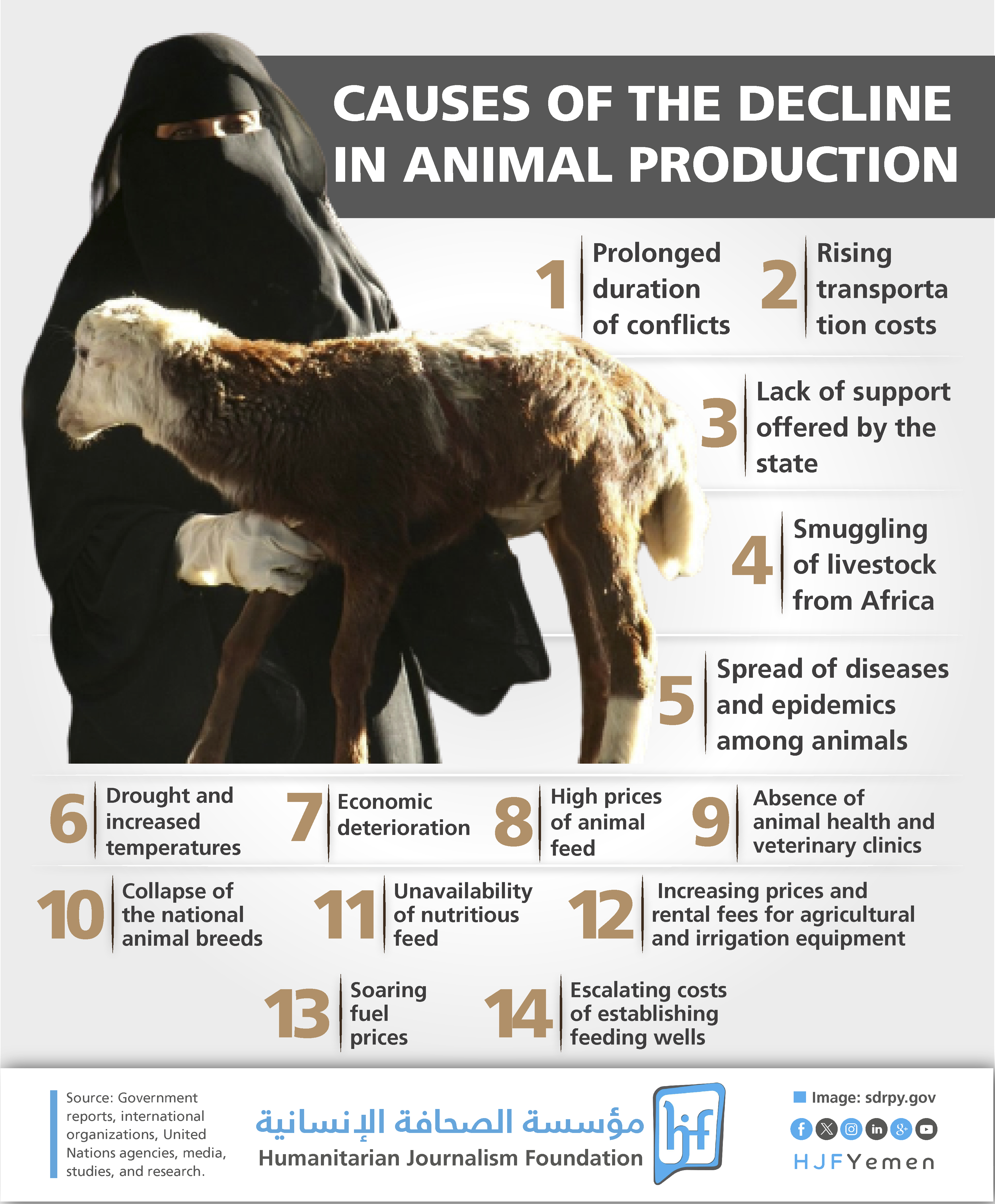
According to Al-Sha'ari, the different forms of animal production in Yemen are seen in cattle, sheep and goat rearing, and honeybees, and poultry farming. And its products include meat, milk and its derivatives, honey, and eggs. Al-Sha'ari pointed out: "Most of the animal production activity is in the private sector."
Regarding the lack of available data and the statistical process for livestock, Al-Sha'ari points out that "the state has not conducted agricultural statistics since 2004 until now." He adds, "There are estimated numbers for the various types of animal wealth, including cattle, sheep, goats, and camels, up to the year 2021. Currently, data for the year 2022 is being prepared by the Livestock Management and the General Administration for Agricultural Statistics in the Ministry of Agriculture, Irrigation, and Fisheries Affairs."
"The role of the Animal Production Management department involves developing programs and plans to preserve and increase livestock. We train specialized agricultural guides to carry out awareness and guidance activities for livestock breeders, aiming to preserve agricultural animals and combat diseases affecting them, in addition to coordinating with international supporting organizations and facilitating their tasks in the field to support livestock breeders and increase production," notes Al-Sha'ari.
He adds : "The ministry's plans to address the impacts of climate change on animal production in Yemen include educational guidance for livestock breeders. This involves raising awareness to preserve the environment, avoiding excessive deforestation, and expanding the cultivation of crops as animal feed."
Climate Risk in Yemen
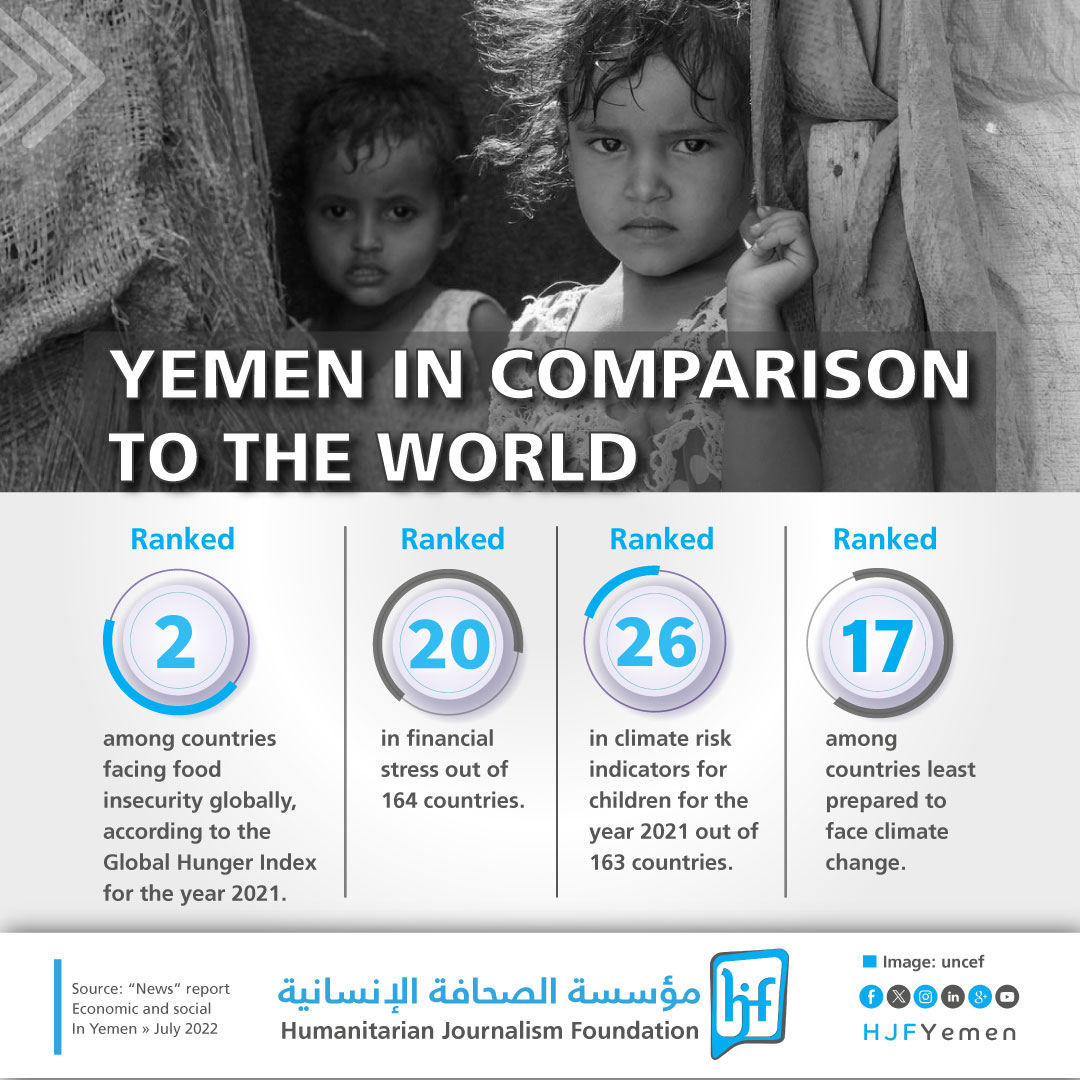
According to Dr. Waddah Badhib, the Minister of Planning and International Cooperation in the Internationally Recognized Government, Yemen ranks 30th among the most vulnerable countries and 17th among the least capable countries to cope with the impacts of climate change.
The country, located in the southwest of the Arabian Peninsula, is among the most vulnerable countries in the world to climate change and is also among the least prepared to mitigate or adapt to its effects.
As for susceptibility to climate impact, Yemen ranks 171 out of 181 countries. Yemenis also experiencing the world's worst humanitarian crisis due to the prolonged conflict, according to the United Nations.